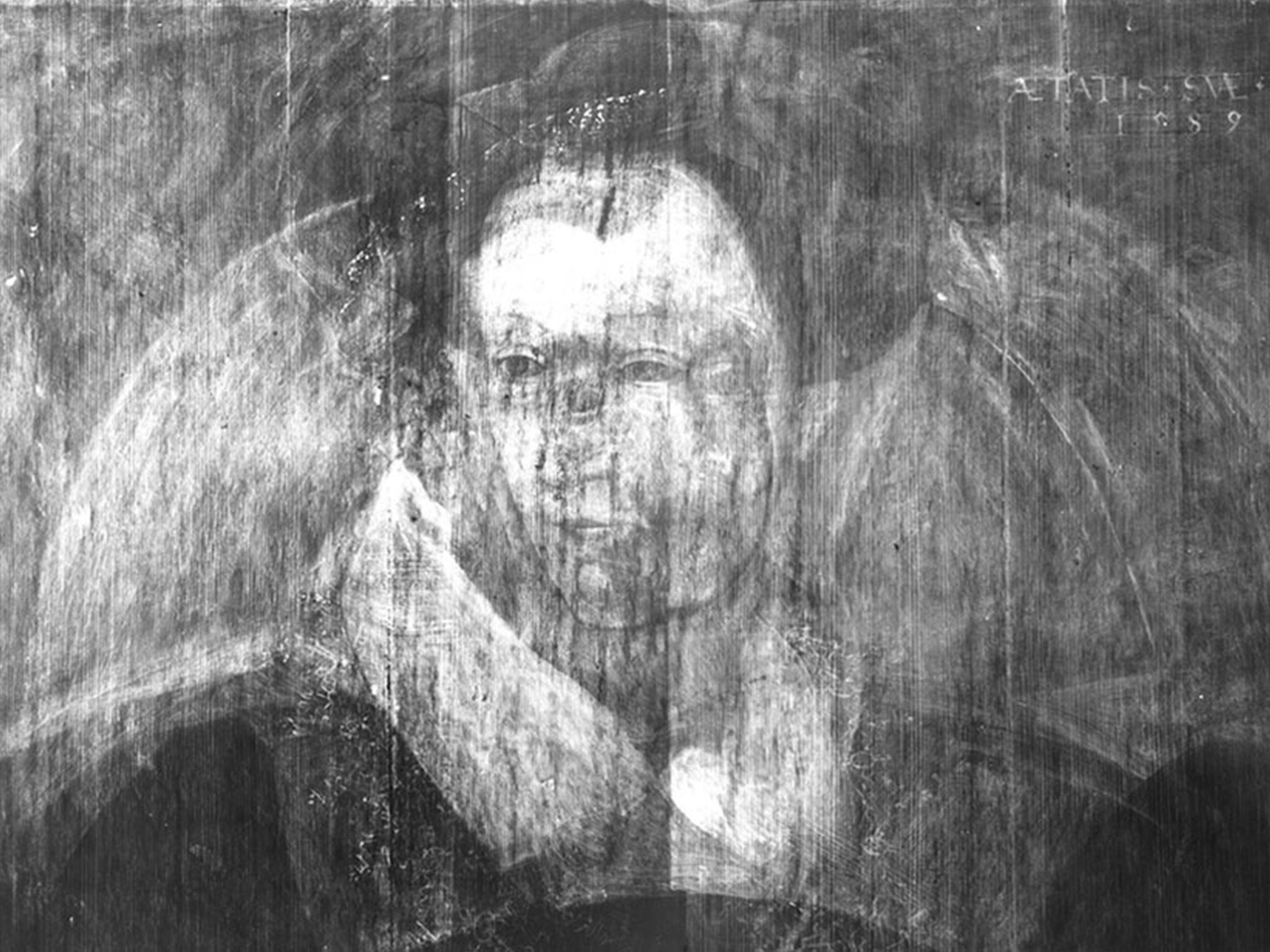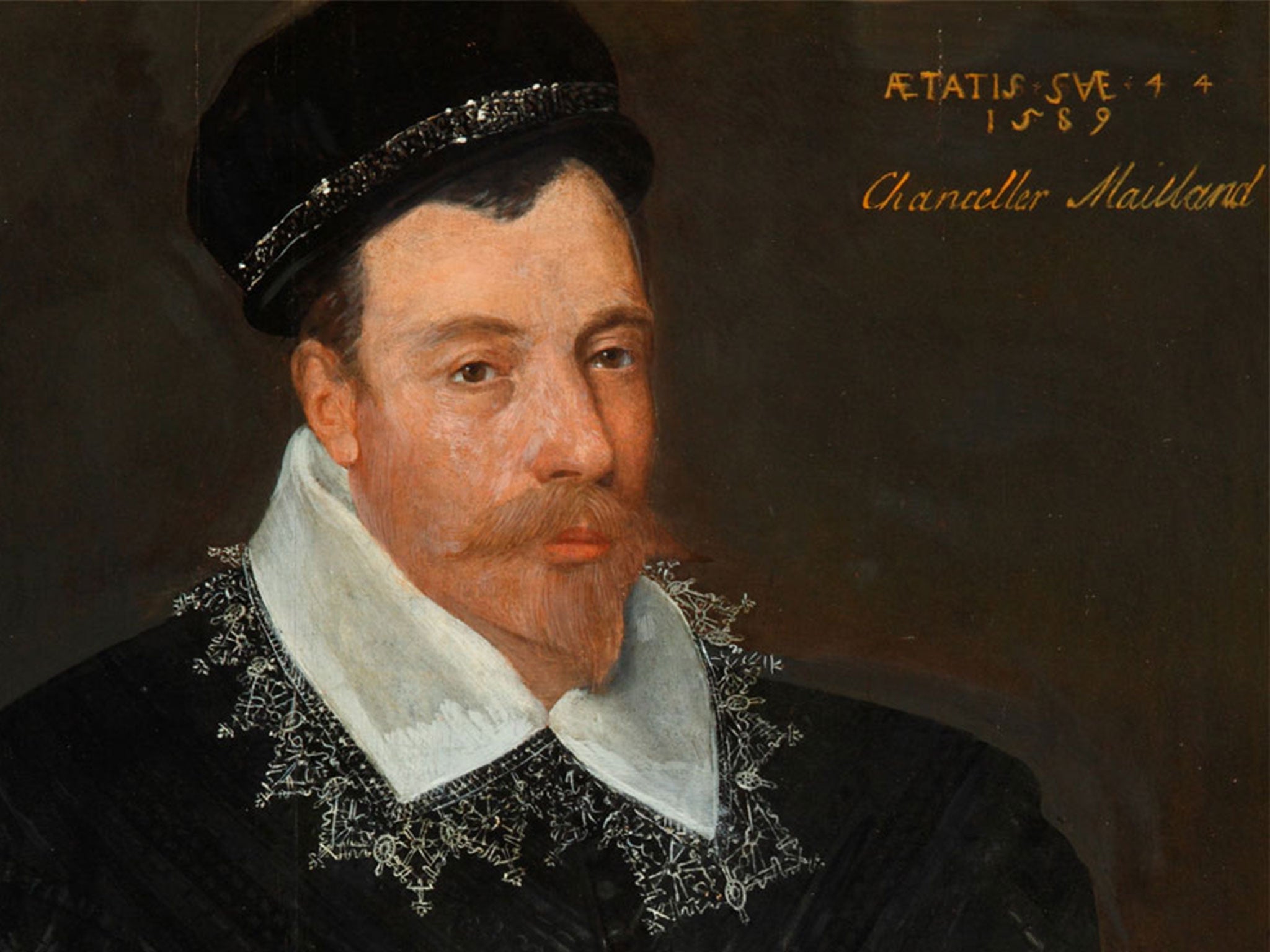Rare ghostly image of Mary Queen of Scots discovered hidden beneath artwork
Newly discovered example – revealed through x-ray imaging – is of great historical importance

Your support helps us to tell the story
From reproductive rights to climate change to Big Tech, The Independent is on the ground when the story is developing. Whether it's investigating the financials of Elon Musk's pro-Trump PAC or producing our latest documentary, 'The A Word', which shines a light on the American women fighting for reproductive rights, we know how important it is to parse out the facts from the messaging.
At such a critical moment in US history, we need reporters on the ground. Your donation allows us to keep sending journalists to speak to both sides of the story.
The Independent is trusted by Americans across the entire political spectrum. And unlike many other quality news outlets, we choose not to lock Americans out of our reporting and analysis with paywalls. We believe quality journalism should be available to everyone, paid for by those who can afford it.
Your support makes all the difference.A previously unknown rare portrait of Mary Queen of Scots, as she would have looked as she languished in captivity in England some four and a half centuries ago, has been discovered underneath a later painting of a Scottish nobleman.
Only around four contemporary non-miniature portraits of Mary during her years of captivity still exist. This newly discovered example – revealed through x-ray imaging – is therefore of great historical importance.
The rarity of contemporary portraits of the deposed Scottish Queen is particularly remarkable, considering that she is arguably the most famous of all Scottish monarchs.
Her story is one of the most tragic in history – a tale of glamour, abduction, rape, murder, betrayal, imprisonment, conspiracy, disgrace and eventual and particularly bloody execution.
But in a sense, the newly discovered portrait of her mirrors that tragedy – for the project to paint her was abandoned halfway through, almost certainly as a result of her trial and execution.
As English secret agents unmasked her complicity in a plot to murder Queen Elizabeth I, she became public enemy number one in England. But, together with allegations that she had been complicit in the murder of her own first husband, the plot to kill Elizabeth made her a politically toxic personage even in Scotland. Murdering a reigning monarch was generally disapproved of.
It is likely that the portrait had been commissioned by a leading Scottish Catholic (Mary was Scotland’s most prominent Catholic). But as the revelations (leading to her execution) became ever more toxic, it seems likely that whoever had commissioned it rapidly thought better of the idea – and presumably didn’t wish to be seen as an admirer of Scotland’s former Queen.

Scotland was in part split between Protestants and Catholics – and showing overt sympathy for Mary would have had heightened political implications during her English trial and execution.
The artist – almost certainly a Dutchman called Adrian Vanson – seems to have stopped painting the portrait very abruptly. Mary’s face, hat and neck had been substantially completed. But her torso and arms had only been sketched in outline and treated with undercoat paint. And her jewellery – normally essential for a high status portrait – had not yet even been sketched. There is a hint of a veil – as if the artist had just begun to toy with the idea of including one.
Bizarrely however, although Mary herself was dead (executed in England), and her portrait had been abandoned halfway through, some key aspects of this rare painting were to visually survive – as part of a slightly later male portrait. For although the artist painted another portrait (of a Scottish nobleman, the Scottish king’s Chancellor, Sir John Maitland) over the abandoned Mary portrait, he actually didn’t paint over all of it. Instead, he turned part of Mary’s dress into the nobleman’s black doublet – and turned Mary’s right hand (in slightly modified form) into her male replacement’s right hand.
“Now that we know from the x-ray images what was going on, it explains why the portrait of the Scottish Chancellor was so awkwardly painted,” said Dr Caroline Rae, the art historian and paintings restorer who discovered the long-hidden Mary painting. The research was funded by London’s Courtauld Institute of Art.
It’s unlikely that Sir John ever knew what lay beneath his likeness. And, because his boss, James VI of Scotland, was Mary’s son, he probably would have been politically embarrassed, to say the least.
Almost certainly, Vanson did not paint Mary from life. He was based in Scotland – and his patron was her son, King James. Mary was a prisoner of Queen Elizabeth in England.
However another artist – Nicholas Hilliard – probably did gain access to Mary in captivity and did paint two miniatures of her. It is possible that Vanson’s previously unknown and never completed painting was based at least in part on one of those miniatures.
Mary began her captivity in England in 1568. The two miniatures were painted in around 1578. Vanson arrived in Scotland in around 1579. He potentially began his Mary painting in summer 1586. Mary was put on trial in England in October 1586 and was executed three months later. Then in 1588 – incidentally, the year of the Spanish Armada – Vanson painted his portrait of Sir John Maitland over the abandoned Mary portrait. Ironically, just a few years earlier there had been a papally-endorsed plan for Mary to marry the man who would eventually launch the Armada – Philip II of Spain.
The Maitland portrait is normally on display in Ham House, the Thames-side palace (now owned by the National Trust) that once belonged to the wife of Maitland’s grandson. It’s almost certainly been there since it arrived in around 1672.
The painting and large detailed x-ray images of the long-hidden Mary portrait will go on public display in the Scottish National Portrait Gallery in Edinburgh for several months from Saturday.
Join our commenting forum
Join thought-provoking conversations, follow other Independent readers and see their replies
Comments